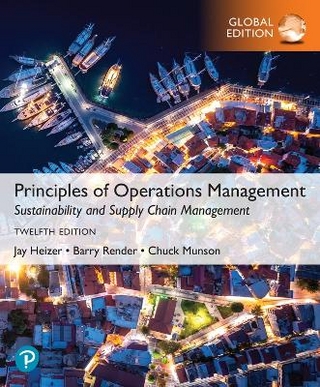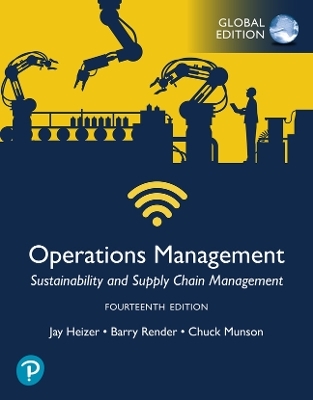
Strategies to the Prediction, Mitigation and Management of Product Obsolescence
John Wiley & Sons Inc (Hersteller)
978-1-118-27547-4 (ISBN)
- Keine Verlagsinformationen verfügbar
- Artikel merken
Supply chains for electronic products are primarily driven by consumer electronics. Every year new mobile phones, computers and gaming consoles are introduced, driving the continued applicability of Moore's law. The semiconductor manufacturing industry is highly dynamic and releases new, better and cheaper products day by day. But what happens to long-field life products like airplanes or ships, which need the same components for decades? How do electronic and also non-electronic systems that need to be manufactured and supported of decades manage to continue operation using parts that were available for a few years at most? This book attempts to answer these questions. This is the only book on the market that coversobsolescence forecasting methodologies,includingforecasting tactics for hardware and software that enable cost-effective proactive product life-cycle management. This book describes how to implement a comprehensive obsolescence management system within diverse companies. Strategies to the Prediction, Mitigation and Management of Product Obsolescence is a must-have work for all professionals in product/project management, sustainment engineering and purchasing.
Bjoern Bartels is a senior consultant and obsolescence managementcompetence lead with a masters degree in international business and a German diploma in industrial engineering and business management. Ulrich Ermel is Head of Department Materials and Obsolescence Management at TQ Systems GmbH and Chairman of the Component Obsolescence Group in Germany. Peter Sandborn , PhD, is Professor of Mechanical Engineering in the CALCE Electronic Products and Systems Center at the University of Maryland. Michael Pecht , PhD, is Chair Professor of Mechanical Engineering and Director of the Center for Advanced Life Cycle Engineering (CALCE) at the University of Maryland. He is also a visiting Professor in Electronics Engineering at City University in Hong Kong.
Preface xiii 1 Introduction to Obsolescence Problems 1 1.1 Definition of Obsolescence 1 1.2 Categorization of Obsolescence Types 3 1.3 Definition of Obsolescence Management 4 1.4 Categorization of Obsolescence Management Approaches 5 1.5 Historical Perspective on Obsolescence 6 1.6 Occurrence of Obsolescence 8 1.7 Product Sectors Affected by Obsolescence Problems 11 1.8 Parts Affected by Obsolescence Problems 13 2 Part Change and Discontinuation Management 17 2.1 The Change Process 18 2.2 Change-Control Policies of Major Part Manufacturers 18 2.3 Change-Notification Policies of Major Companies 19 2.4 Change-Notification 24 2.5 Change-Notification Paths 27 2.6 Examples of Common Changes 29 3 Introduction to Electronic Part Product Life Cycles 33 3.1 Product Life Cycle Stages 34 3.2 Special Cases of the Product Life Cycle Curve 39 3.3 Product Life Cycle Stages as a Basis for Forecasting 40 4 Obsolescence Forecasting Methodologies 41 4.1 Obsolescence Forecasting--Parts with Evolutionary Parametric Drivers 42 4.2 Obsolescence Forecasting--Parts without Evolutionary Parametric Drivers 56 4.3 Non-Database Obsolescence Forecasting Methodology 70 5 Case Study Hardware Forecasts and Trends 77 5.1 Dynamic RAMs (DRAMs) 77 5.2 Static Random Access Memories (SRAMs) 84 5.3 Non-Volatile Memories 94 5.4 Microprocessors 105 5.5 Microcontrollers and Digital Signal Processors (DSPs) 115 5.6 Logic Parts 120 5.7 Analog Parts 129 5.8 Application-Specific Integrated Circuits (ASICs) 136 6 Software Obsolescence 143 6.1 The Root Causes of Software Obsolescence 145 6.2 Software Obsolescence Mechanisms 146 6.3 Discussion 155 7 Reactive Obsolescence Management 157 7.1 Change and Discontinuance Notifications 158 7.2 Obsolescence Recovery (Mitigation) Tactics 160 7.3 Selecting the Proper Reactive Obsolescence Management Strategy 186 7.4 Reactive Obsolescence Management Checklist 188 7.5 Reactive Obsolescence Management Guideline 188 8 Proactive Obsolescence Management 193 8.1 Members of the Proactive Obsolescence Management Board 194 8.2 Schedule and Milestones 194 8.3 Initial Obsolescence Risk Analysis 195 8.4 Tracking Parts' Availability 197 8.5 Product Obsolescence and Aftersales 197 9 Strategic Obsolescence Management 199 9.1 Applying Project Management Principles to Obsolescence Management 200 9.2 Initiation Stage 202 9.3 Planning and Design Stage 205 9.4 Execution Stage 210 9.5 Monitoring and Controlling Stage 225 9.6 Strategic Obsolescence Management Guidelines 229 10 Obsolescence Management Standards and Organizations 233 10.1 Helpful Standards for Obsolescence Management 233 10.2 Helpful Organizations for Obsolescence Management 237 References 245 Index 267
| Erscheint lt. Verlag | 10.4.2012 |
|---|---|
| Verlagsort | New York |
| Sprache | englisch |
| Maße | 150 x 250 mm |
| Gewicht | 666 g |
| Themenwelt | Technik ► Elektrotechnik / Energietechnik |
| Wirtschaft ► Betriebswirtschaft / Management ► Logistik / Produktion | |
| ISBN-10 | 1-118-27547-0 / 1118275470 |
| ISBN-13 | 978-1-118-27547-4 / 9781118275474 |
| Zustand | Neuware |
| Haben Sie eine Frage zum Produkt? |
aus dem Bereich


